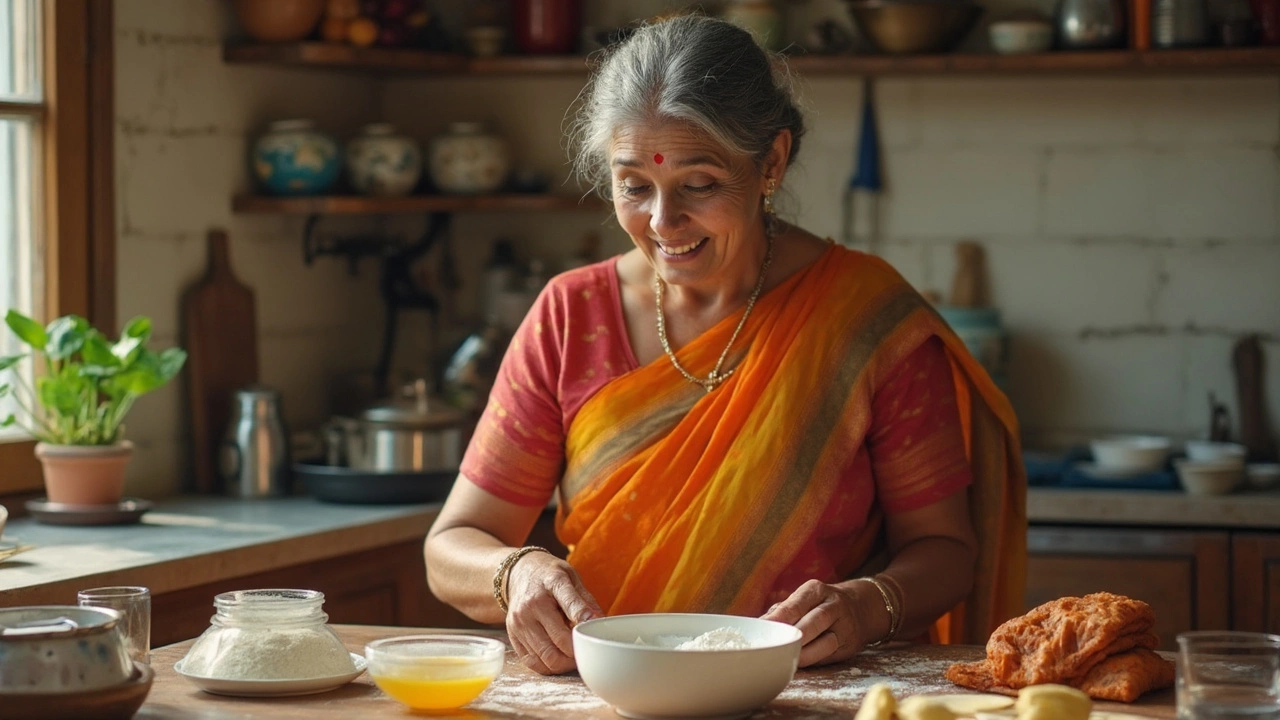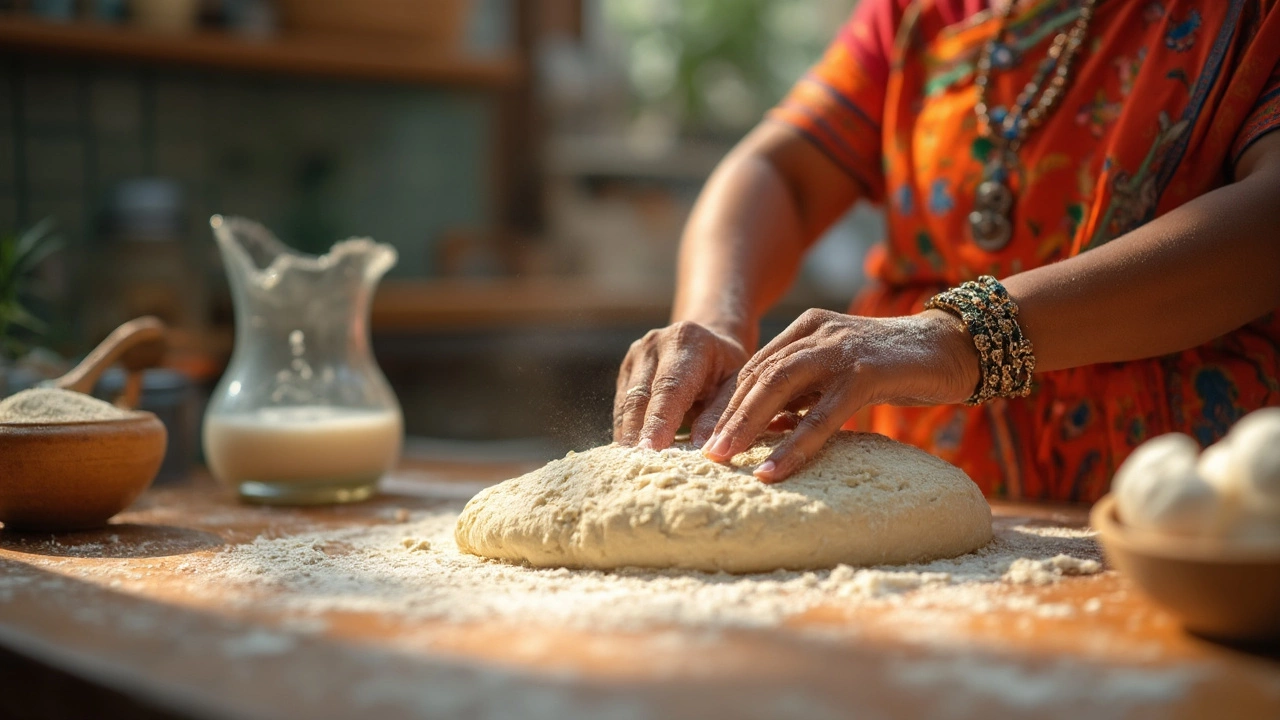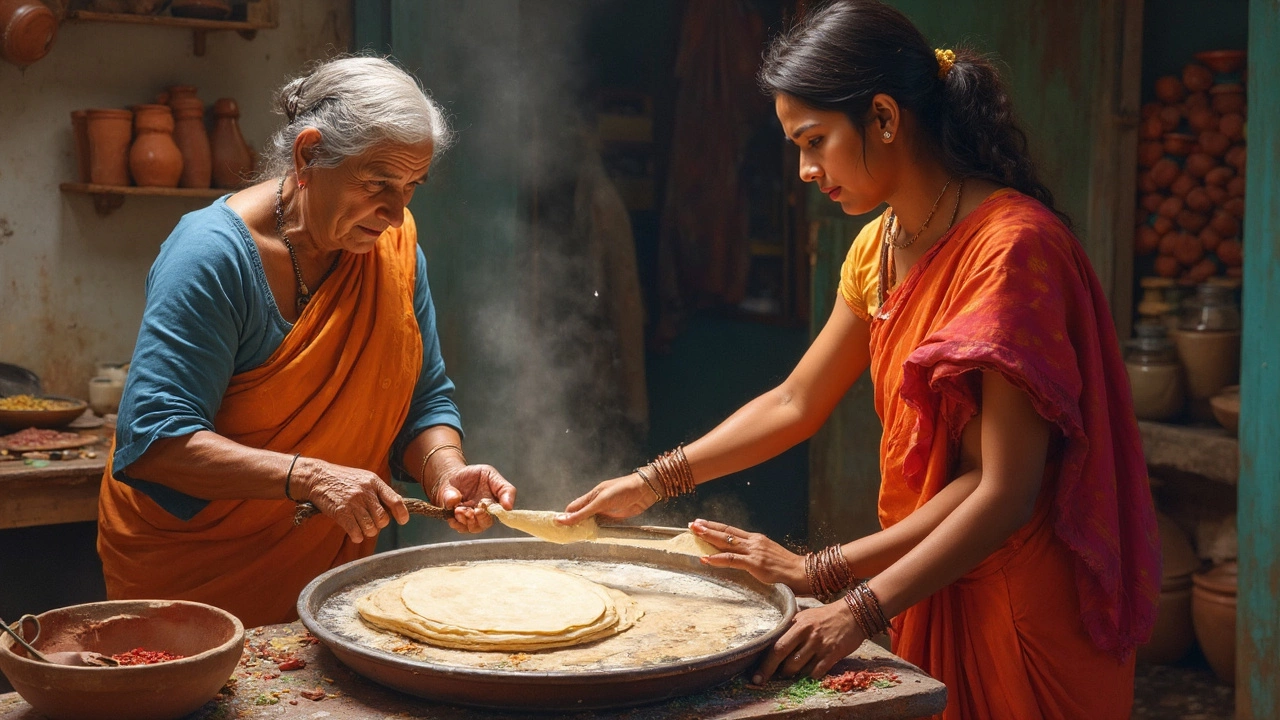Roti – Your Guide to Soft, Fluffy Indian Flatbread
When working with Roti, a round, unleavened flatbread made from whole wheat flour and cooked on a hot griddle. Also known as chapati, it is a staple across North India and forms the base for many meals. Chapati, the synonym most households use shares the same dough but often differs in thickness and cooking speed. The core of a good roti lies in the dough, a hydrated mixture of whole wheat flour, water, and a pinch of salt that must be kneaded until smooth. Using whole wheat flour, known locally as ‘atta’, provides the fiber and flavor that give roti its distinctive bite, while the right amount of oil or ghee added at the correct stage keeps it soft. Roti isn’t just about mixing; it requires skillful rolling and high‑heat cooking to achieve that prized puff, a sign that the steam inside has expanded the layers.
Key factors that shape a perfect roti
First, the dough’s hydration level matters – too dry and the roti will crack, too wet and it will stick to the rolling pin. A common fix is to let the dough rest for 15‑20 minutes; this relaxation allows gluten to relax, making rolling easier and helping the roti puff later. Second, the timing of oil addition is crucial. Adding a teaspoon of oil after the dough has rested, but before the final knead, coats the gluten strands and results in a softer bite. Third, some cooks experiment with a pinch of baking soda; this tiny amount can create tiny air pockets, making the roti lighter, but over‑use will give a soapy taste. Finally, cooking temperature is a make‑or‑break factor – the tava (griddle) must be hot enough to sear the surface instantly, trapping steam inside and forcing the roti to puff. If the heat drops, the roti stays flat and dry.
The collection below dives into these topics in depth: why a roti might refuse to puff, how oil timing changes texture, the debate over baking soda, and other common pitfalls. Whether you’re a beginner looking for a fool‑proof recipe or an experienced home cook fine‑tuning your technique, the articles ahead give you actionable tips, science‑backed explanations, and quick fixes to turn every roti into a fluffy, tasty companion for your curries and vegetables.

Does Roti Need Baking Powder? The Real Deal for Softer Breads
Wondering if you should add baking powder to roti dough? This article breaks down if baking powder is a must for soft rotis, how it changes texture, and what most home cooks actually do. Find practical tips, some science behind old-school methods, and easy hacks for perfecting your rotis every time. Plus, learn which tweaks make a difference and what’s just a time-waster in the kitchen.

Why Does Roti Get Hard After Cooking? Simple Fixes That Work
Roti can go from soft to tough pretty quickly, and it's not just luck—technique matters. This article digs into why rotis often turn hard after cooking and how to keep them soft every time. From dough texture and resting times to rolling skills and cooking tricks, you'll find clear reasons and down-to-earth solutions. Common myths will get debunked with actual practical advice. If you want your rotis to be soft and fluffy, this is a must-read.

How Many Calories in One Roti? Find Out Instantly!
Explore the calorie content of a single roti, a staple in many Indian households, and how it fits into your daily nutritional needs. Learn about its impact on your Body Mass Index (BMI) and determine how many chapatis you should consume daily for optimal health. This guide provides practical steps, local insights, and a calorie calculator to enhance your dietary choices.